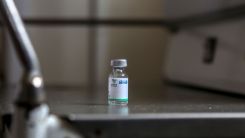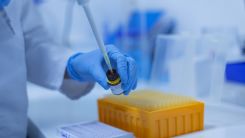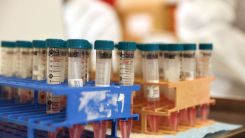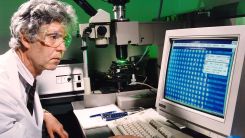
Olive Marie Morales


Sinopharm vs Pfizer-BioNTech COVID-19 Vaccine: Which is More Effective?

COVID-19 Patients Likely to Experience Five Months Without Sense of Smell and Taste

Elon Musk Says SpaceX Will Double Satellite Internet Speeds of Starlink in 2021

Second Face Transplant for Domestic Abuse Survivor, First Person to Undergo Such Surgery

Microbes on Earth Could Temporarily Live on Martian Surface, New Research Shows
Dragonfly Drone Would Probe Saturn's Moon Titan and Its Waters

Asymptomatic People Transmit Half of COVID-19 Infections

Marmots Use Own Language to Communicate With Their Tribe

4 Humor Styles That People Have: Which Style is Yours?

3 Reasons Why It’s Time to Change The Same Daily Workout Routine

One in Five People Die from Fossil Fuel Air Pollution

Study Reveals Difference in Behavior of Cats and Dogs Towards Their Owners and With Strangers Around

Scientists Use a Technique To Regrow and Fix Damaged Liver From Lab-Grown Cells; First in the World
Secret Revealed: Male Bats Use Odor for Sex Appeal

Research Finds Boy Playing Video Games Have Lower Risk of Depression

Natural Gas Compressor Noise Impacts Songbirds’ Reproductive Success

Pandemic May Impair the Social Intelligence of Children

People with Darker Skin, Likely to Suffer from Psychological Effects of Acne

Has Polar Vortex Really Arrived? Here’s What Report Indicates

Study Shows Robotic Nose More Sensitive to Odor Than Cancer-Detecting Dogs
Overly Crowded Space Can Be Solved by De-orbiting Satellites

Sleeping for Less Than 5 Hours Each Night Can Double the Risk of Dementia

Research Reveals How Climate Delayed Some Dinosaur Migration

Universal Accounting Method for Measurement of Carbon-Based Matter, Now Available
Blue-Green Algae May Help Astronauts Survive on the Red Planet

Canadian COVID-19 Vaccine Manufacturer Announces Production of 50 Million Doses This Year

What’s Causing The Loud Breathing When We’re Asleep?

New Approach To Compute Long-Distance Interactions Between Molecules? New Research Has an Answer
Two Backwards-Spinning Planets Spotted
Most Popular

Extreme Weather Science Reveals How Climate Change Patterns and Global Warming Transform Earth's Weather

What Causes Tornadoes and How They Form: Tornado Science Explained for Extreme Storms

Why Pandemics Keep Happening: Pandemic Cycle and the Rise of Emerging Diseases

How Planets Form: Planet Formation and Protoplanetary Disks in Solar System Creation




